Your Marble Queen Pothos Has a Secret (And Here’s How to Keep It Happy)
I’ve been around tropical plants for a long, long time, both in huge commercial greenhouses and helping out private collectors. And I can tell you, very few plants give you that perfect mix of stunning looks and surprising toughness like a pothos. But the Marble Queen? She’s in a league of her own. Honestly, this is the plant that often teaches people the single most important rule of thumb for houseplants: light is everything.
In this article
A Marble Queen isn’t just a regular pothos that someone splattered white paint on. It’s a genetic quirk, a beautiful accident where some of the plant’s cells literally forgot how to make chlorophyll. This is what gives you that gorgeous, creamy marbling. But here’s the catch: those pretty white parts are freeloaders. They can’t make food for the plant. They rely entirely on the green parts to do all the work. Once you really get that, you’ve cracked the code to keeping your Marble Queen thriving.
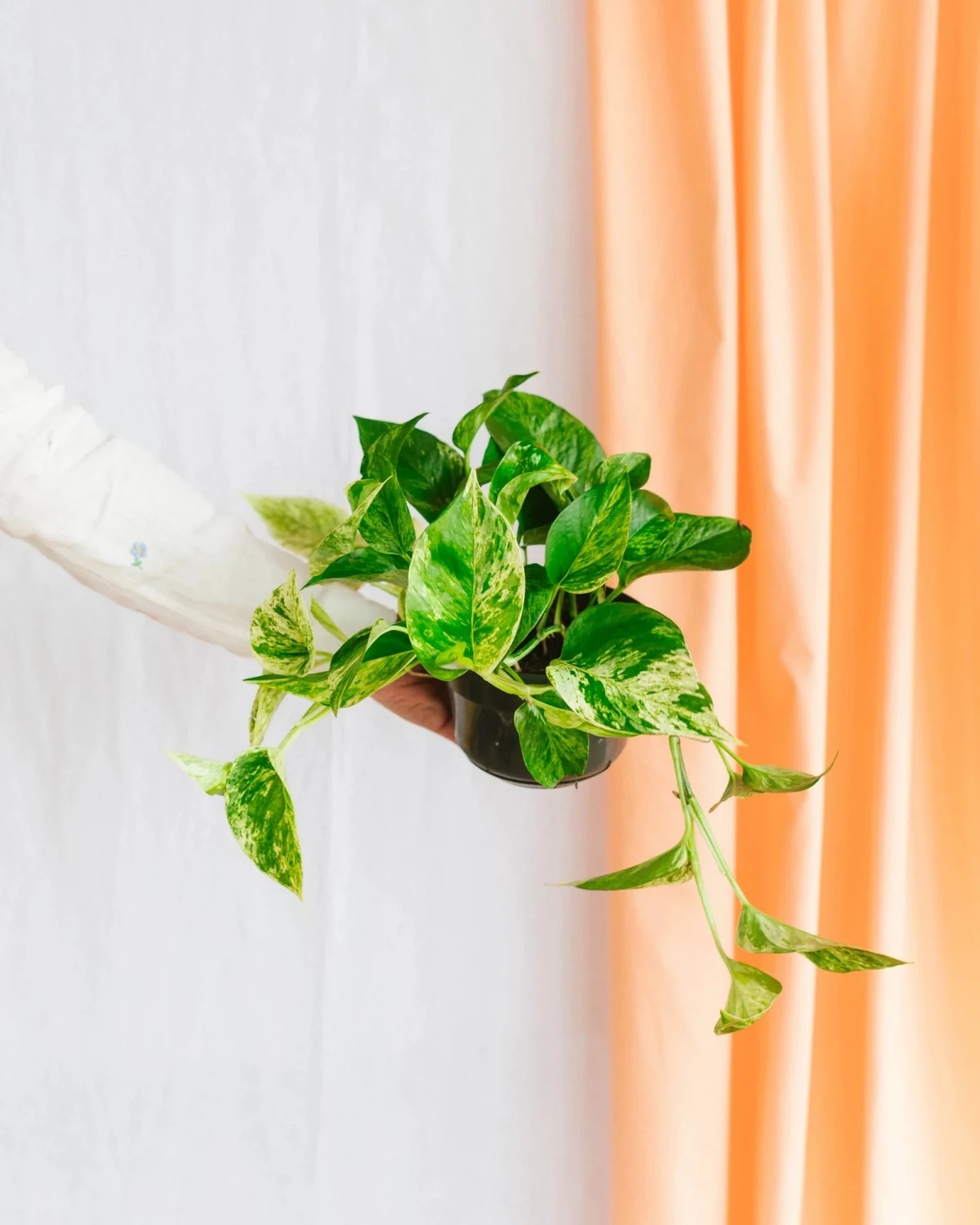
So, What’s Up With The Variegation?
To keep this plant happy, you have to understand what’s going on under the hood. The fancy term is a ‘cultivar,’ which just means it was specially selected for its unique leaves. This pattern comes from something called chimeric variegation.
Think of it like this: the plant’s makeup is a jumble of two different cell types living together. One type is normal and green, busy making energy through photosynthesis. The other type is mutated and can’t produce that green stuff. The result is a beautiful but unstable patchwork of green and white. This is why no two leaves are ever exactly the same.
But that instability is also why a Marble Queen can “revert.” If you stick it in a dark corner, the plant goes into survival mode. The green, energy-making cells have a huge advantage, so the plant will start pushing out new leaves with more and more green. It’s not sick; it’s just trying to feed itself. Your job is to give it enough light so it doesn’t feel the need to ditch its beautiful white patches.
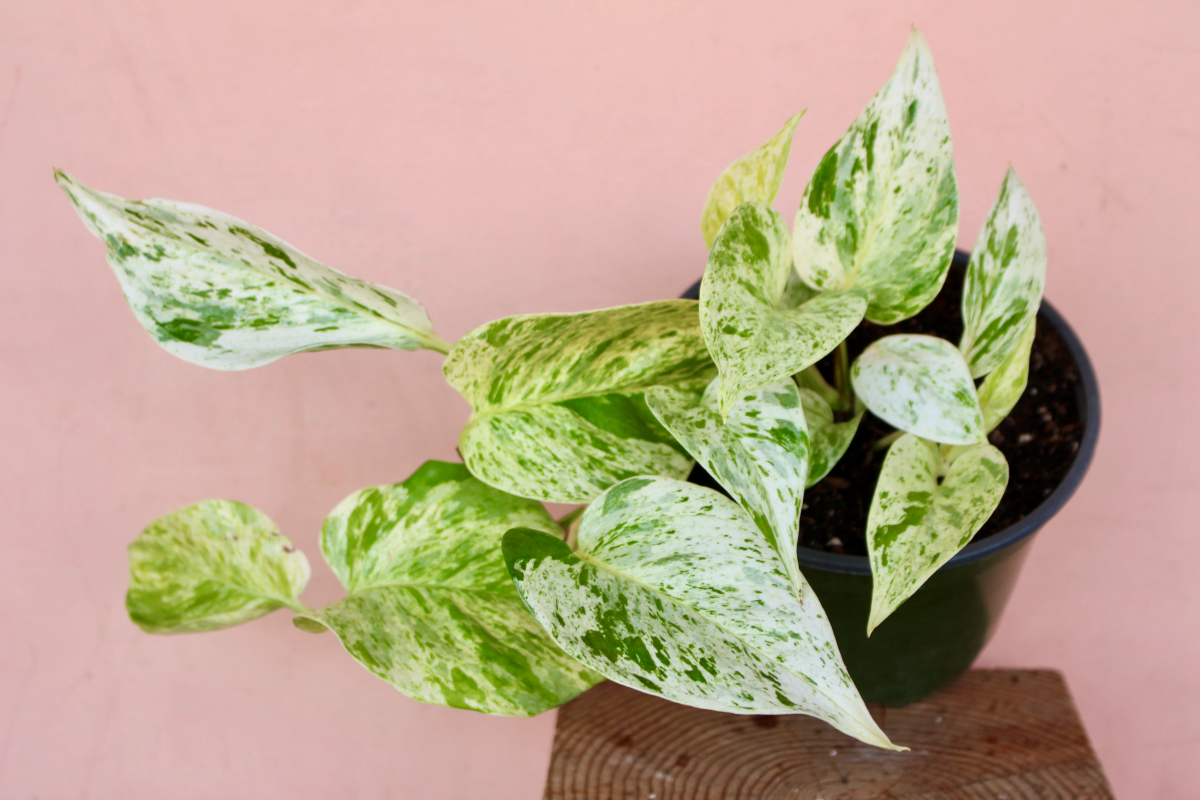
My Go-To Care Tips for a Thriving Marble Queen
Once you get the hang of it, caring for a Marble Queen is pretty straightforward. You’re just trying to find a happy medium that supports both the hardworking green parts and the delicate white parts of the leaves.
Light: The Make-or-Break Factor
You always hear “bright, indirect light,” but what does that even mean? Let’s get specific. For a Marble Queen, you want a spot where it gets a good few hours of bright, filtered sun. An east-facing window is often the sweet spot—it gets that soft morning light that won’t scorch the leaves. A spot a few feet back from a south or west window, maybe behind a sheer curtain, works great too.
Here’s a little trick I tell everyone: try the hand-shadow test. Hold your hand about a foot over where you want to put the plant. If you see a soft, fuzzy shadow, you’re golden. If you see a sharp, dark shadow, that spot is getting direct sun and it’s too intense for the delicate white parts of the leaves. Direct sun will literally fry those white sections, leaving ugly brown, crispy spots.
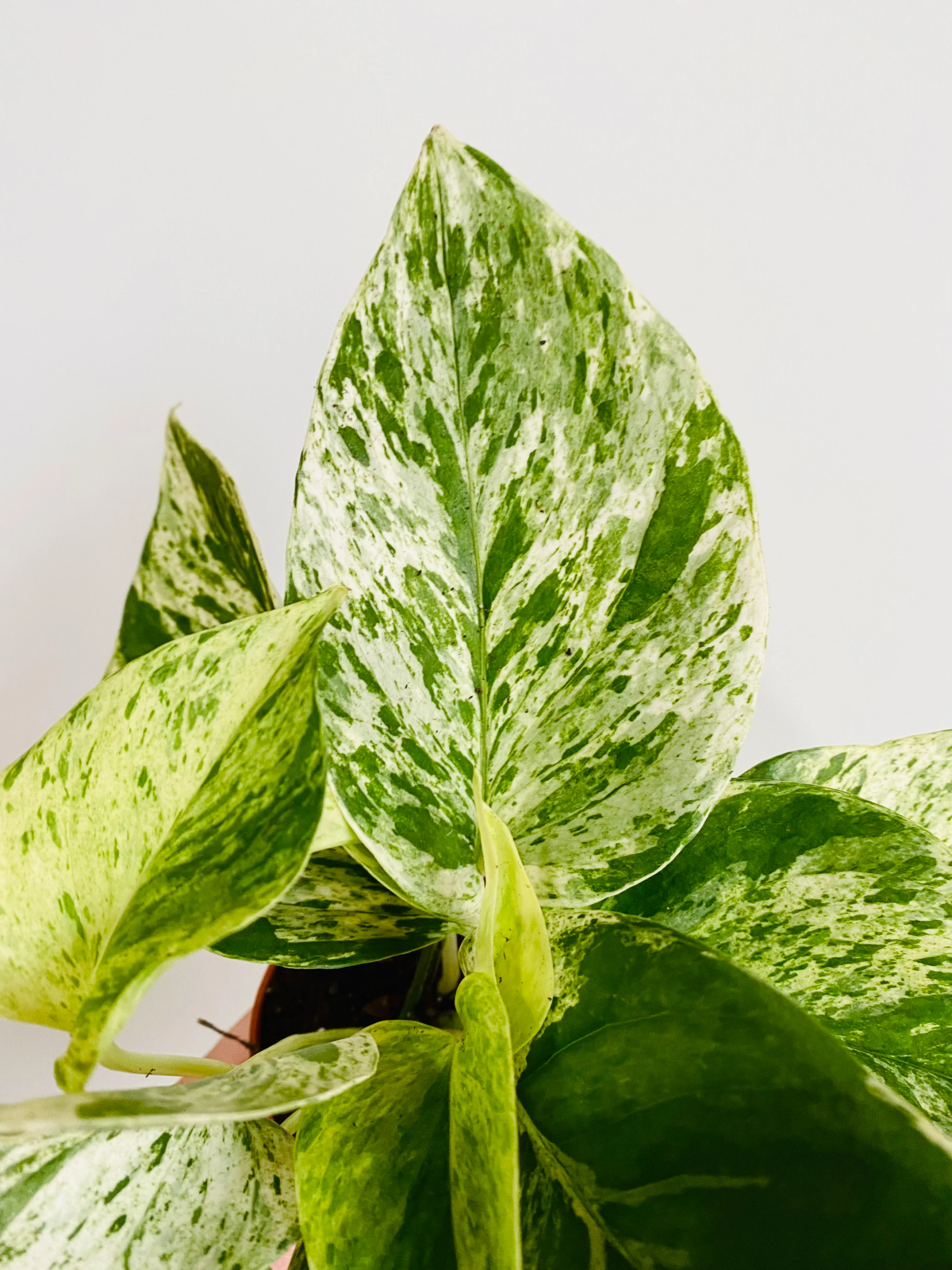
What if you only have a north-facing window? It can work, but you’ll have to manage your expectations. Growth will be slower, and you’ll need to be extra vigilant about the plant reverting to green. You might even consider supplementing with a small grow light, which you can get online for about $20-$30.
Watering: Ditch the Schedule
Overwatering is the number one way people kill their houseplants. Seriously. These guys have roots that are built for a cycle of a good soak followed by a chance to dry out. They absolutely hate sitting in soggy, wet soil.
So, forget watering every Saturday. Instead, get used to checking the soil. The best way is to just stick your finger about two inches down. If it feels dry, it’s time to water. If you feel any dampness at all, give it a few more days. When you do water, take it to the sink and drench it until water pours out the drainage holes. This makes sure the whole root ball gets a drink and helps flush out any built-up minerals.
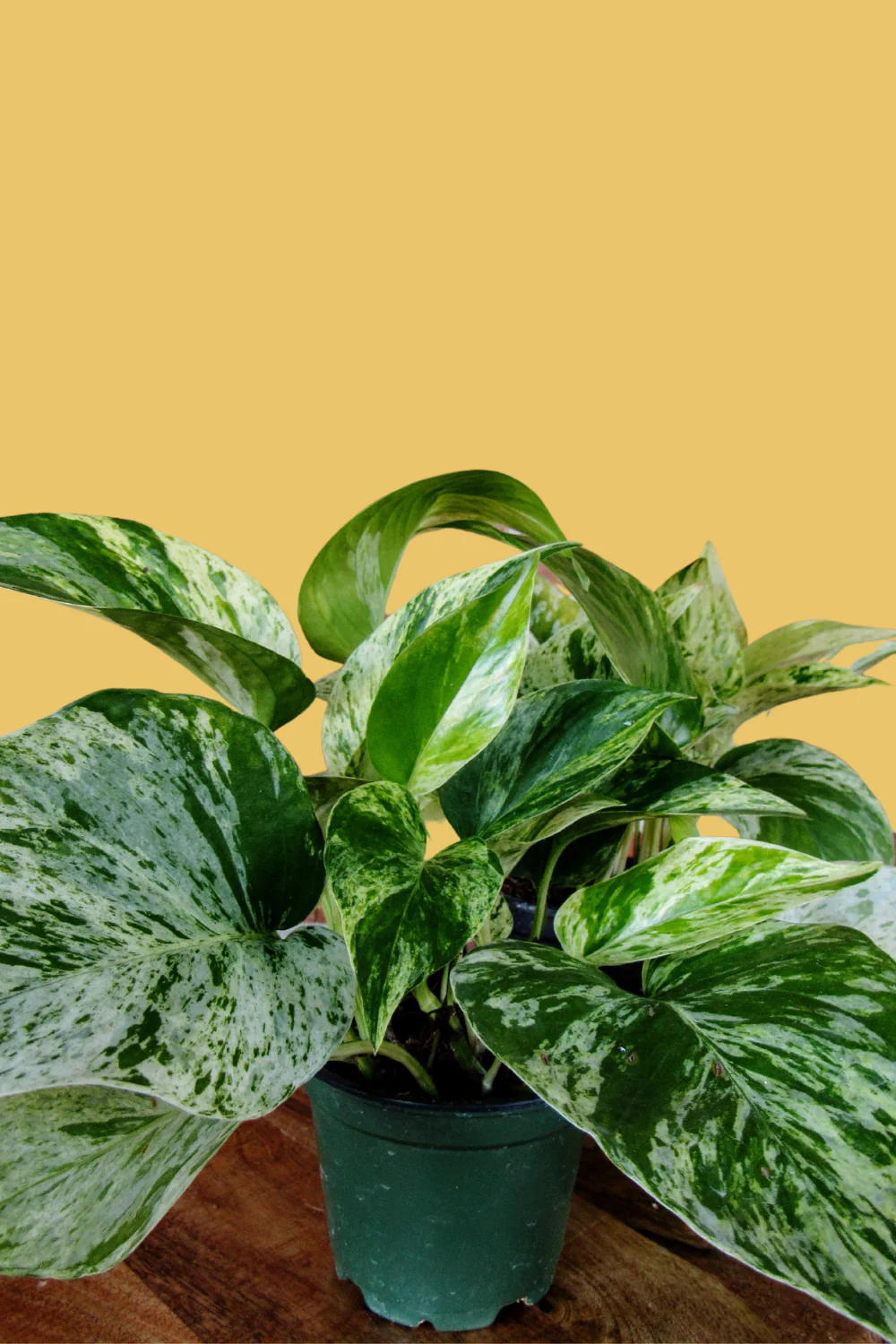
And please, never let it sit in a saucer of water. That’s a one-way ticket to root rot. Early signs of overwatering are usually yellowing leaves (especially the older ones) and a droopy look even when the soil is wet.
Soil: The Foundation for Healthy Roots
The right soil is just as crucial as your watering game. That dense, heavy mix a lot of plants come in from big-box stores is just not great for the long run. You want something light and airy that drains well.
I use a simple DIY mix for all my pothos and other aroids. It’s super easy to make and makes it almost impossible to overwater.
My Go-To Aroid Soil Mix:
- 1 part good indoor potting mix. This is your base. A bag usually costs around $5-$10.
- 1 part perlite. Those little white crunchy bits. They create air pockets for the roots. A bag is about $5.
- 1 part orchid bark. This adds chunky structure and helps with drainage. Expect to pay around $7 a bag.
You can find all of this at places like Home Depot, Lowe’s, or any local garden center. Just mix it all together in a bucket. When you water this stuff, you’ll see it flows right through, which is exactly what you want.
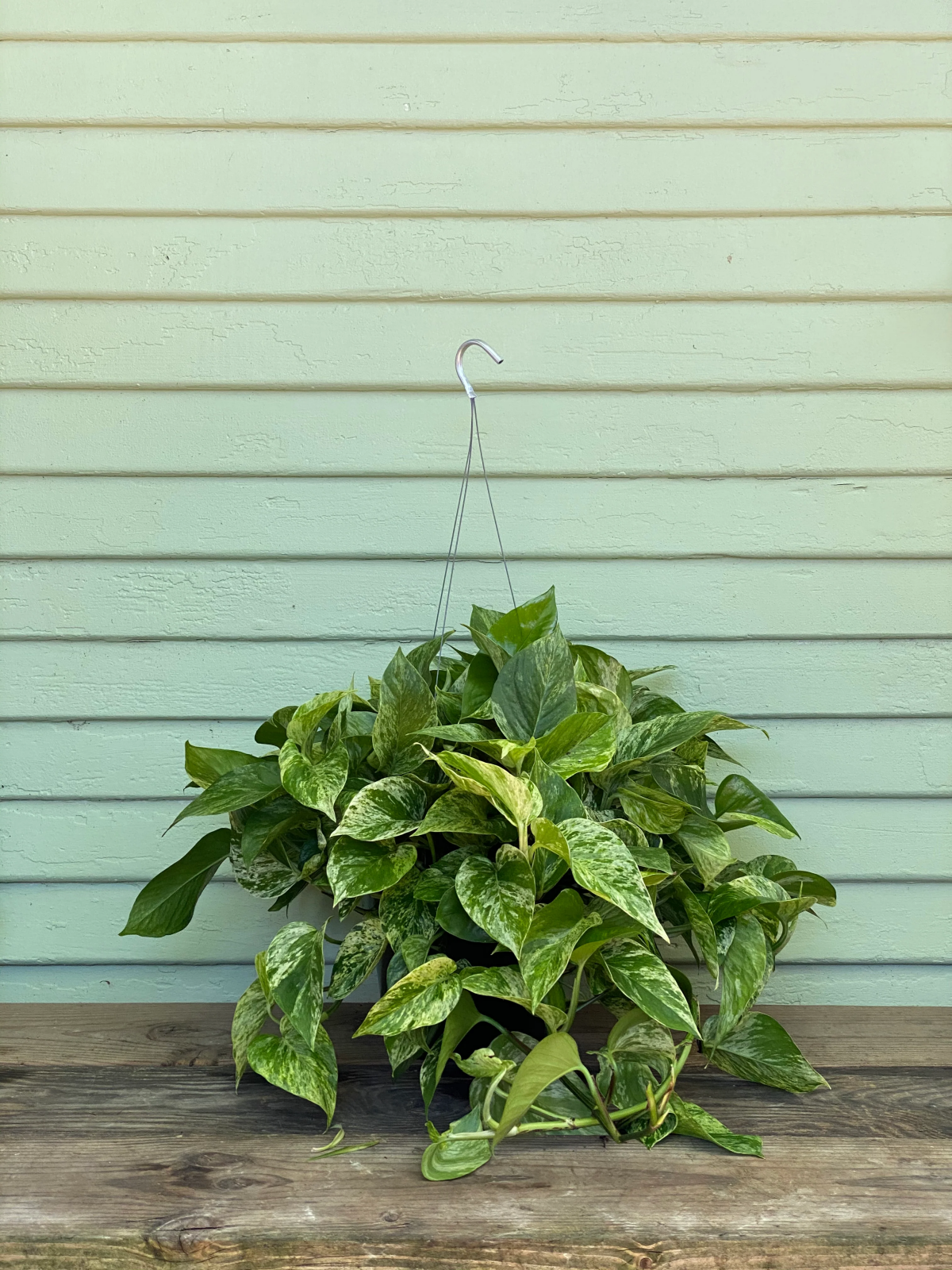
Temperature and Humidity
These are tropical plants, so they like it warm and a bit humid—basically, the same temperatures we find comfortable, around 65-85°F. Keep them away from cold drafts in the winter or hot blasts from a heating vent.
They’ll tolerate average home humidity, but if you live in a really dry place, you’ll see it in the form of brown, crispy leaf edges. You can group plants together or use a pebble tray, but honestly, the most effective solution is a small room humidifier. I’m not a fan of misting; it barely raises the humidity and can sometimes lead to fungal spots on the leaves if the air is stagnant.
Fertilizing: Less Is More
Because half the leaf isn’t making energy, Marble Queens are slower growers and lighter feeders than their all-green cousins. It’s way easier to over-fertilize than under-fertilize them.
During spring and summer, use a balanced liquid fertilizer (like a standard Miracle-Gro All-Purpose) but—and this is important—dilute it to half or even a quarter of what the bottle recommends. Feed it once a month or so. In the fall and winter, just stop. Let the plant rest.
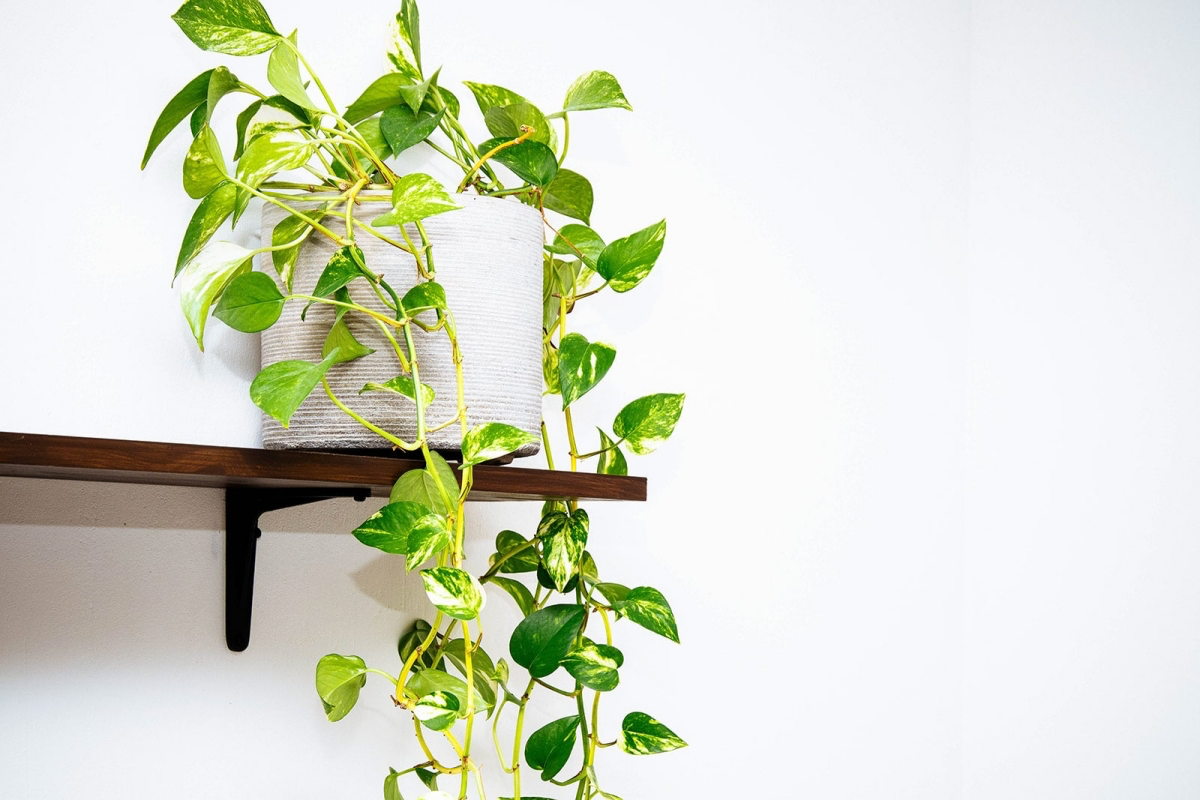
Pruning for a Fuller Plant (and Free Plants!)
Left on its own, a Marble Queen vine can get long, sparse, and a little sad-looking. Regular pruning is the secret to getting a full, bushy plant. When you snip a vine, it encourages the plant to branch out and make new growth points.
By the way, if you see a vine that has reverted to solid green, you need to cut it off. I had a plant once where one green vine grew so fast it started to take over, shading out the more delicate variegated leaves. I had to be ruthless and chop it all the way back to save the plant’s marbled look. Don’t be afraid to do it!
The best part of pruning? Free plants! Just take those cuttings, make sure they each have a couple of leaves and nodes (the little bumps on the stem), and pop them in a jar of water. Change the water every few days, and in a few weeks, you’ll have roots. Once the roots are an inch or two long, you can plant them in soil.
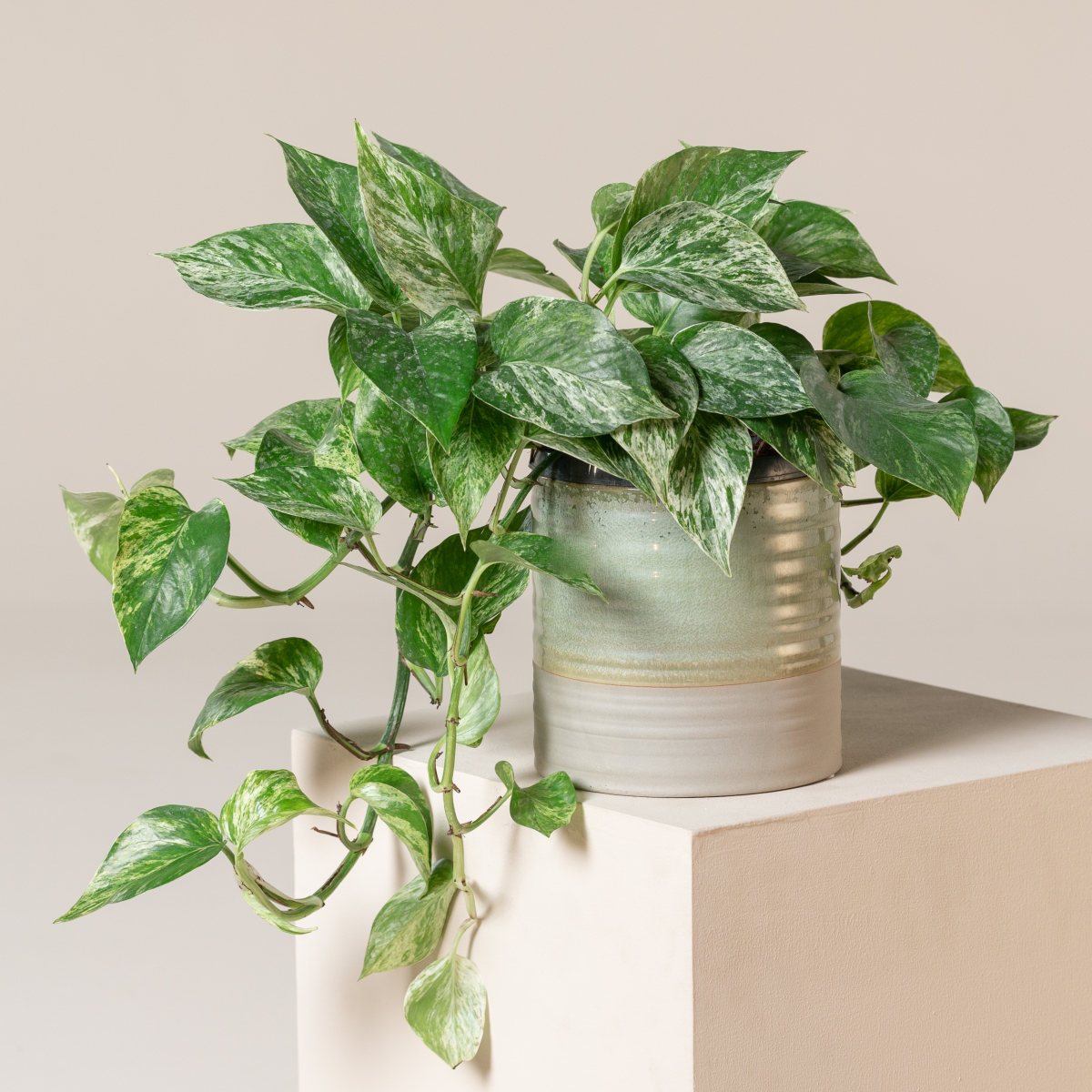
Quick Challenge for You: Go look at your plant right now. Find one vine that’s looking a bit leggy. Snip it back to the length you want. That’s it! You’ve just taken the first step toward a much fuller plant.
Marble Queen vs. The Cousins: A Quick Rundown
It’s easy to get these Pothos types mixed up at the store. Here’s the simple difference:
- Golden Pothos: This is the classic. It’s mostly green with splashes of golden-yellow. It’s a super-fast grower and very forgiving about light.
- Marble Queen Pothos: This is our star. It has a more balanced mix of green and creamy white, creating a speckled or marbled pattern. It grows slower than a Golden and needs more light to keep its color.
- Snow Queen Pothos: Think of this as a Marble Queen on steroids. It’s mostly white with just flecks of green. Because it has so little chlorophyll, it’s a very slow grower and is the most demanding of the three when it comes to getting its light just right.
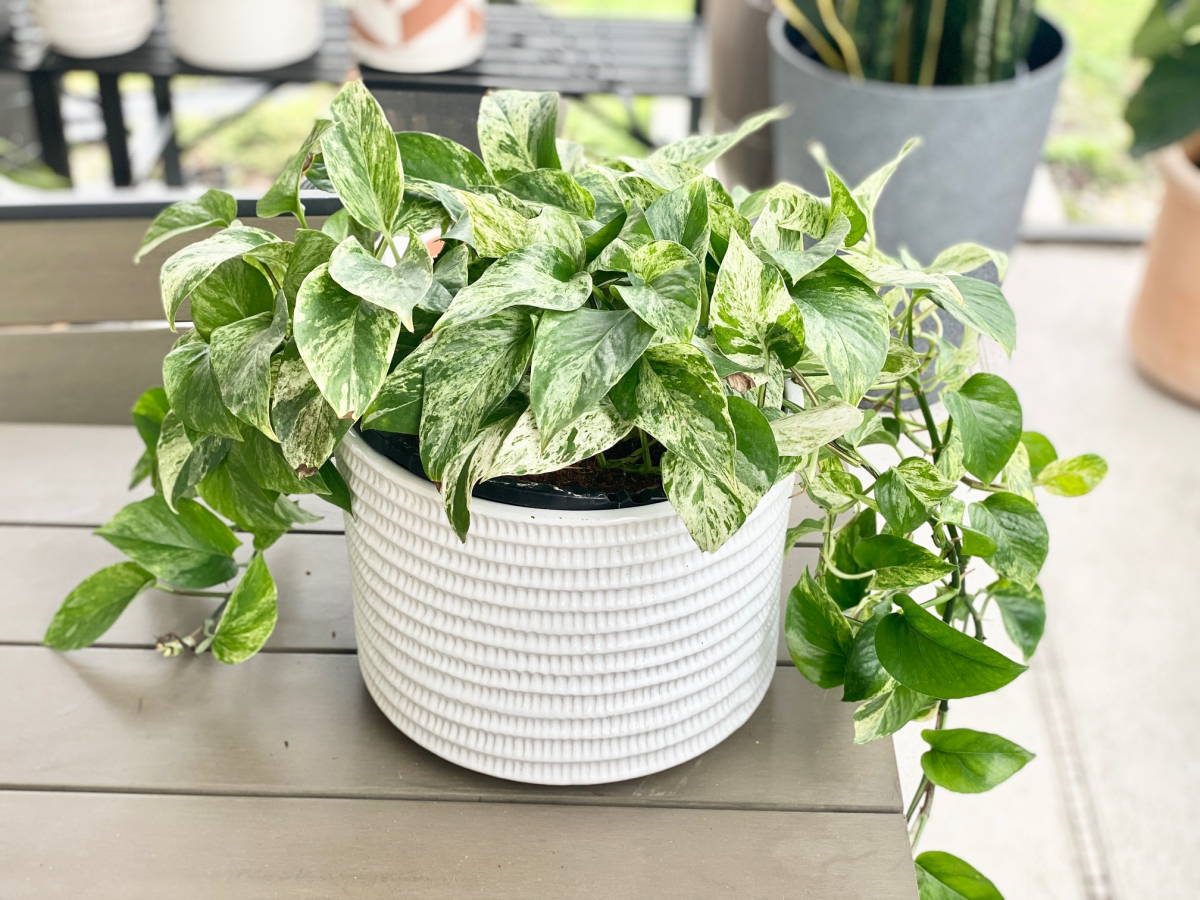
Troubleshooting Common Problems
Seeing yellow leaves? If it’s just one or two old leaves at the base, that’s normal. If it’s a lot of leaves, you’re almost certainly overwatering. Let that soil dry out!
Brown, crispy spots in the middle of leaves? That’s sunburn. Move it out of any direct sunbeams.
Brown, crispy tips or edges? This usually points to low humidity or letting the soil get bone-dry for too long between waterings.
The new leaves are all green? Not enough light! It’s reverting. Move it to a brighter spot and prune off those all-green vines.
Seeing pests? Look for tiny white cottony fluff in the nooks and crannies (that’s mealybugs) or fine, spider-like webbing under the leaves (spider mites). For a small issue, wipe them off with a cotton swab dipped in rubbing alcohol. For bigger problems, an insecticidal soap spray from the garden center is your friend.
A Quick Heads-Up for Pet Owners
Important to know: all pothos plants, including the Marble Queen, are toxic to cats and dogs if they chew on them. They contain crystals that can cause irritation, swelling, and drooling. It’s rarely life-threatening but very uncomfortable, so it’s best to keep this plant up high, well out of reach of curious pets and small children.
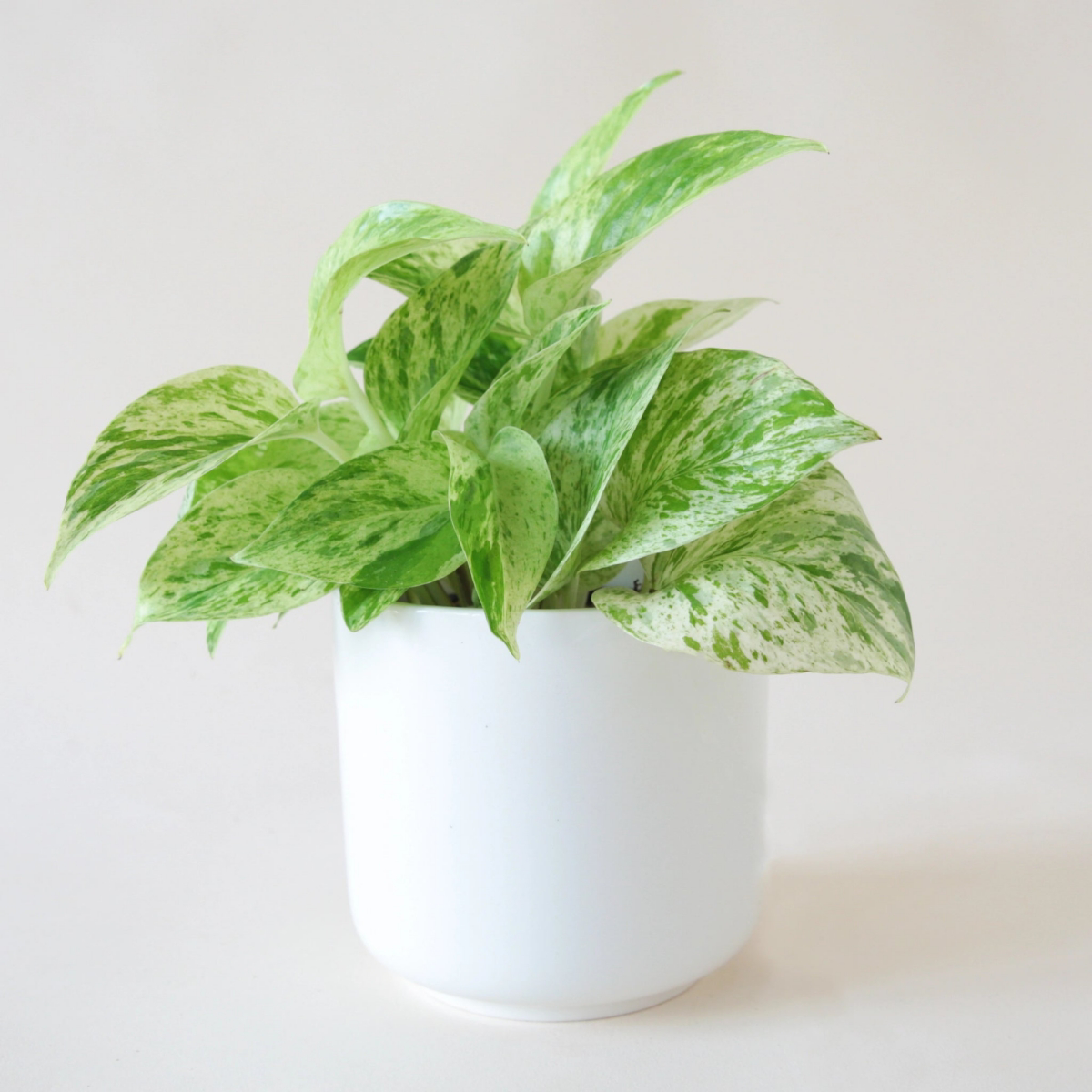
The Marble Queen really is a fantastic plant. It challenges you just enough to make you a better plant parent, paying closer attention to what it needs. Give it the right balance, and you’ll be rewarded with a beautiful cascade of marbled leaves for years to come.
Galerie d’inspiration
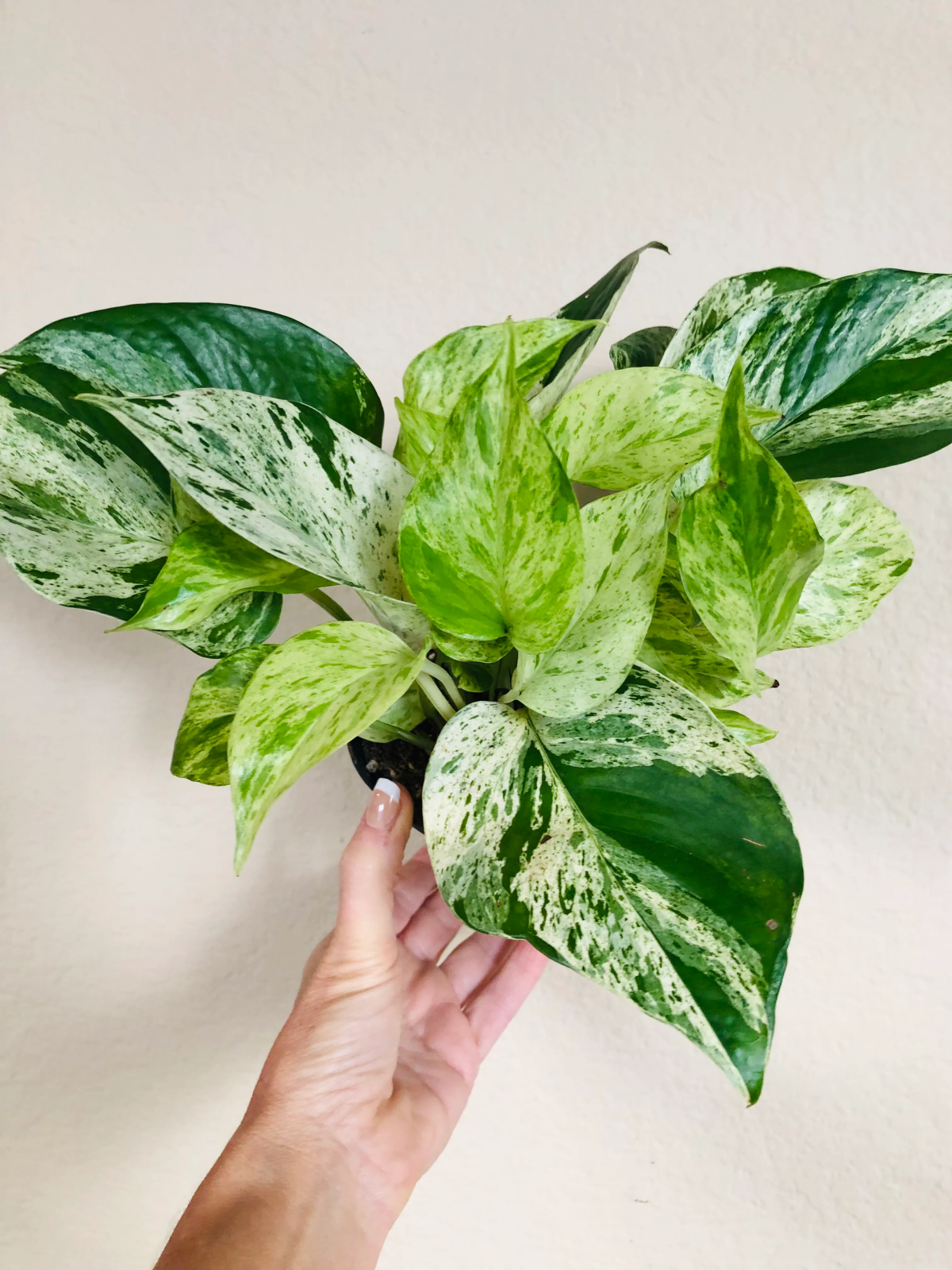
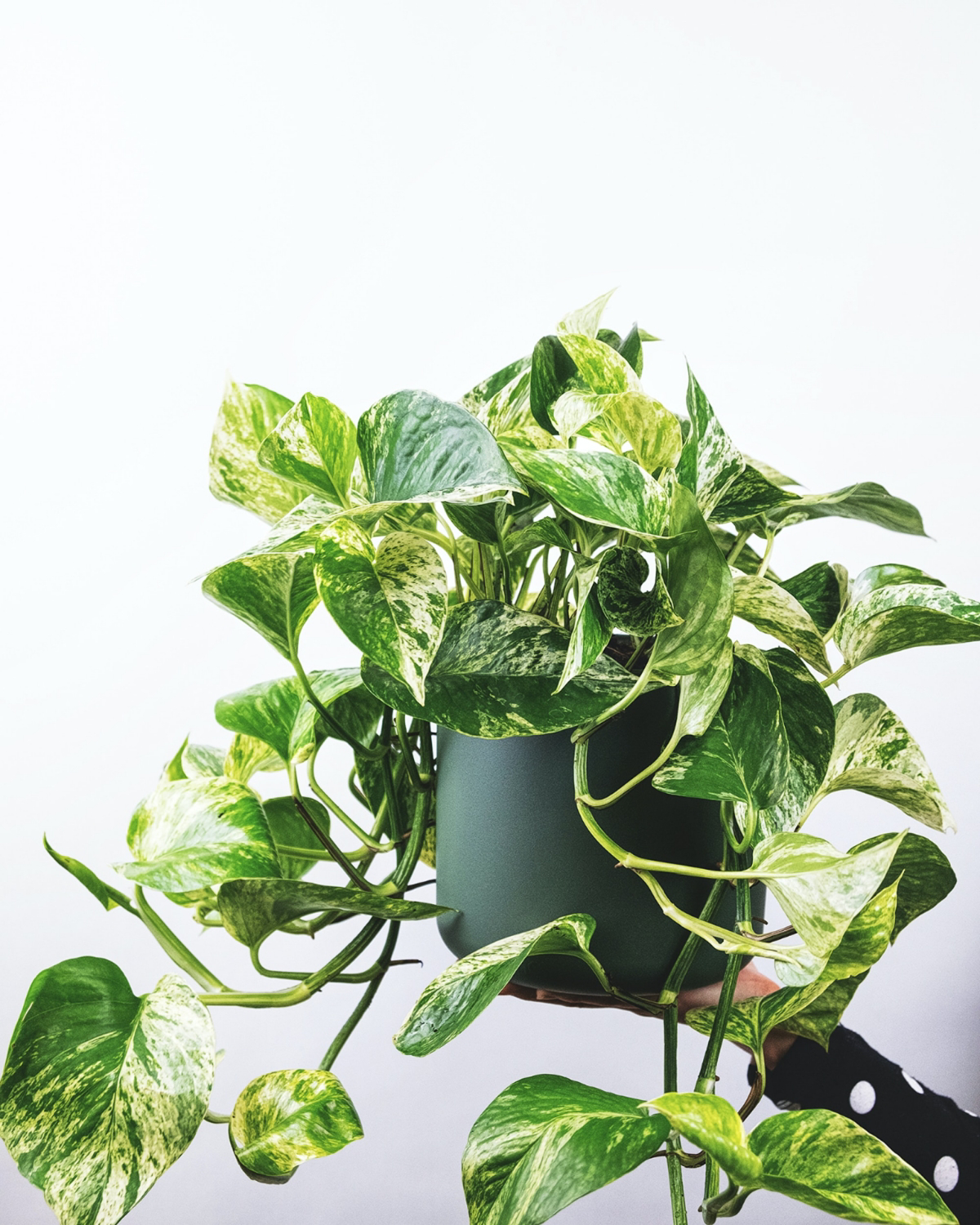
Wondering why some leaves are turning yellow?
Don’t panic! It’s not always a disaster. Most often, a yellow leaf on a Marble Queen is a sign of overwatering. Let the top inch or two of soil dry out completely before you water again. It can also be the plant’s natural process of shedding an old leaf to make way for new growth. If you see many yellow leaves at once, check the roots for rot and consider if it might be time for a nutrient boost with a balanced houseplant fertilizer, like Espoma’s Indoor! liquid plant food, during its spring and summer growing season.
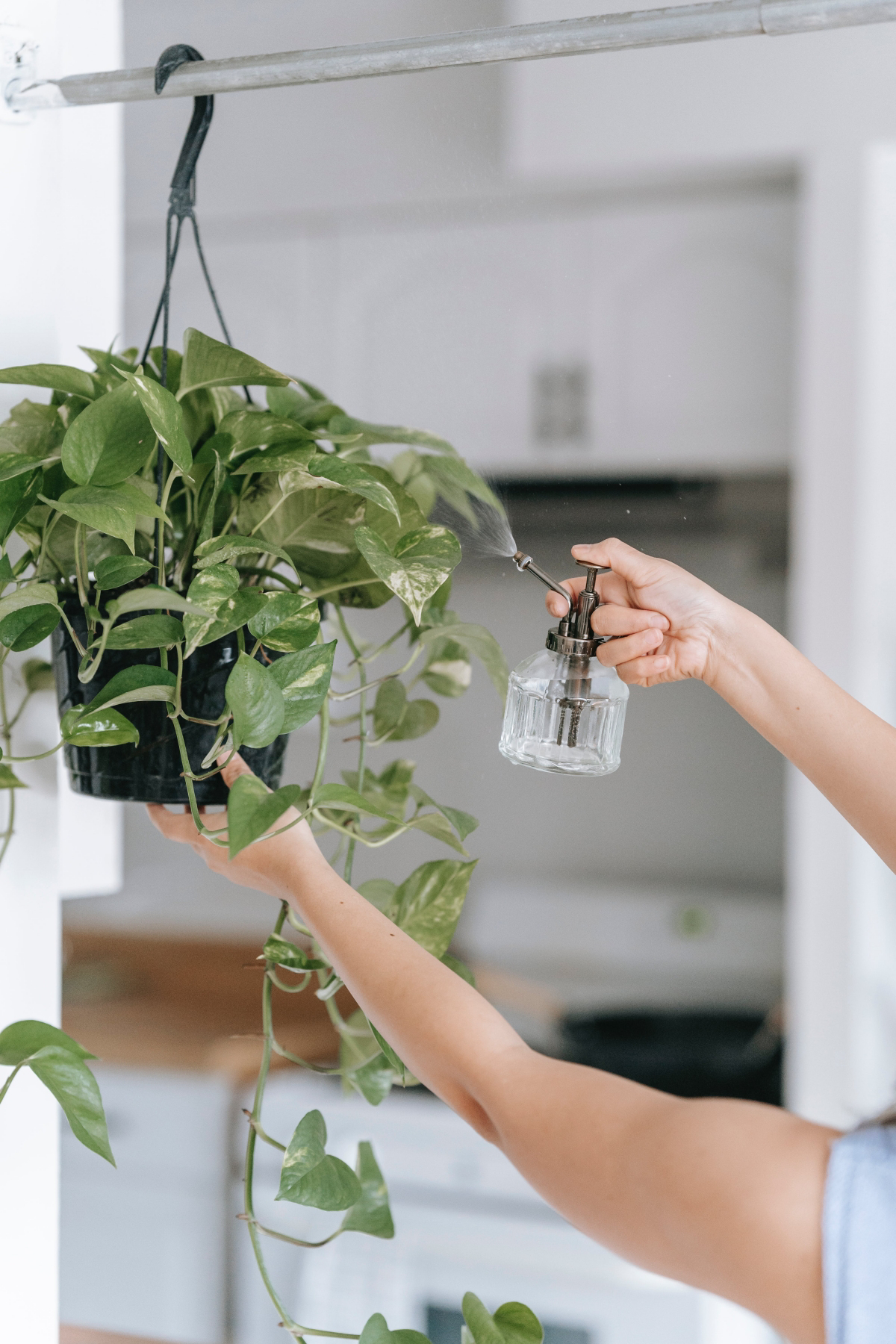
Pothos plants were famously included in NASA’s Clean Air Study, which found they were effective at removing indoor air pollutants like formaldehyde, xylene, and benzene.
So, while you’re admiring its marbled beauty, your plant is also quietly working to make your home’s air healthier. The lush foliage acts as a natural, living air purifier—a beautiful and functional addition to any room.
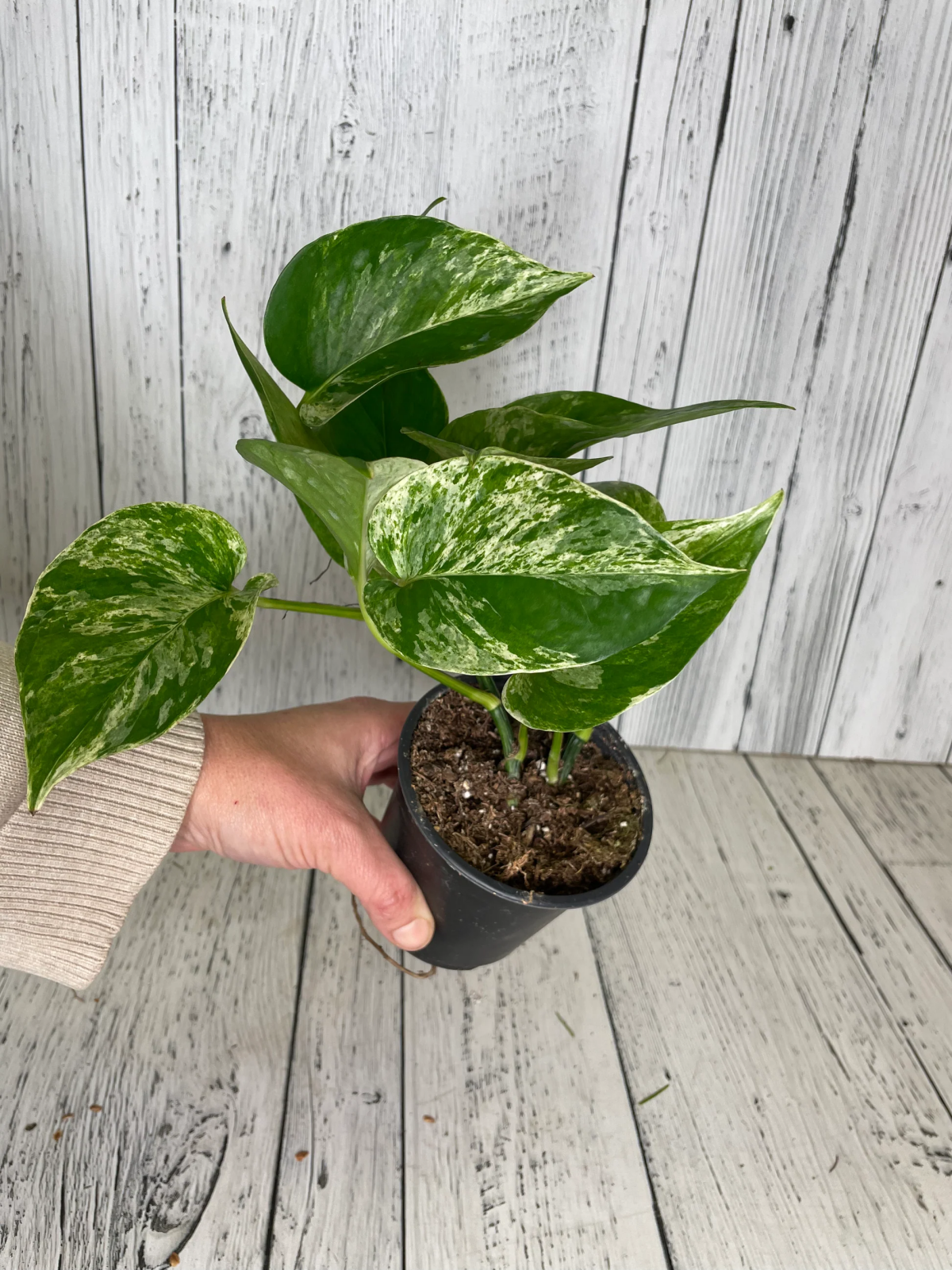
The secret to a lush, full Marble Queen isn’t what you buy, but what you snip. Propagating is your best friend. Simply trim a few healthy vines (making sure each cutting has at least 3-4 leaves and a node), place them in a jar of water, and watch new roots sprout in a few weeks. Once they’re an inch or two long, you can plant them back into the original pot. This not only creates a bushier, more compact plant but also gives you new baby plants to share!
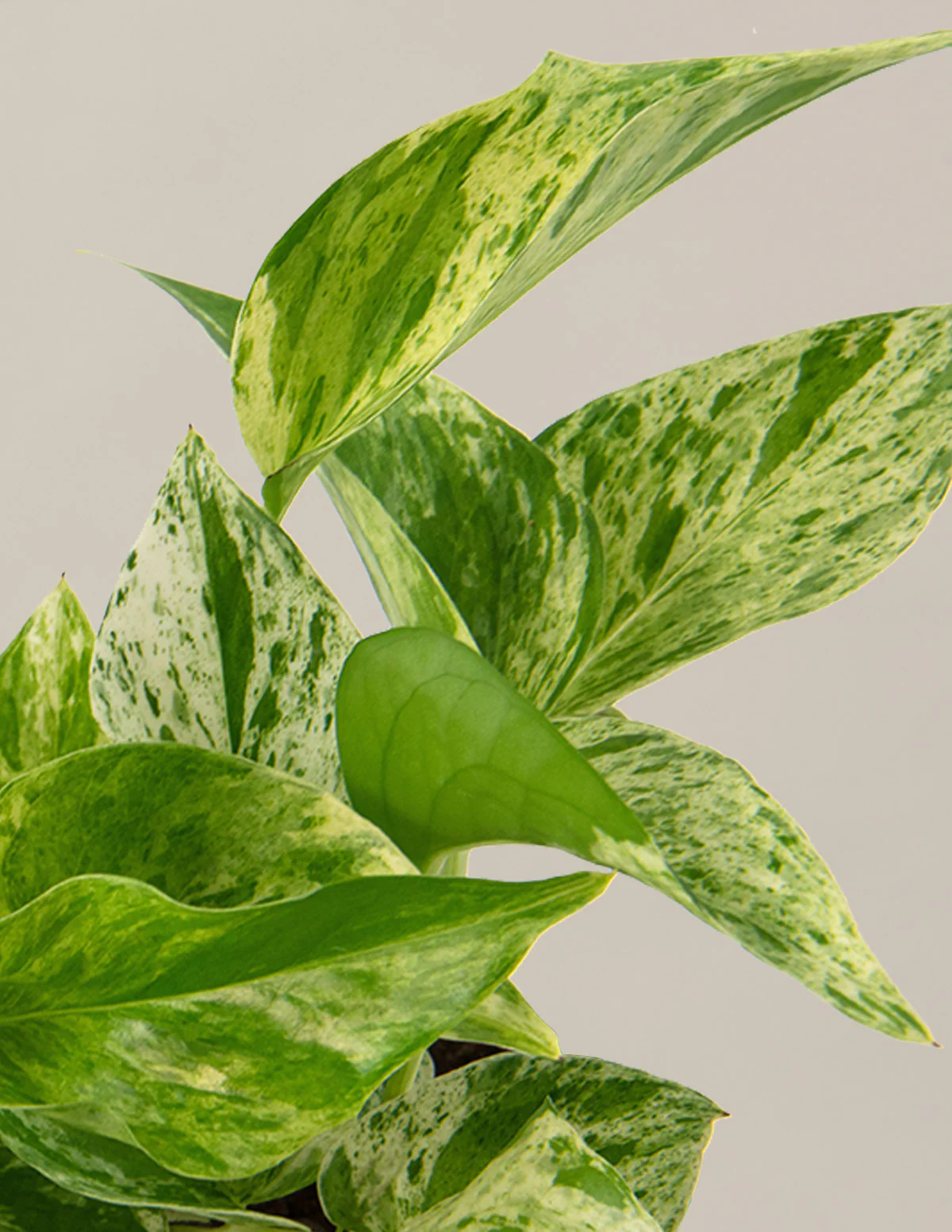
DIY Aroid Mix: For the hands-on plant parent, create a super airy mix by combining one part potting soil, one part perlite, and one part orchid bark. This ensures excellent drainage and aeration, preventing root rot.
Store-Bought Solution: In a hurry? A quality pre-made blend for aroids, like the one from Sol Soils, provides the perfect chunky, well-draining environment right out of the bag.
Either way, you’re giving your Marble Queen the foundation it needs to thrive.
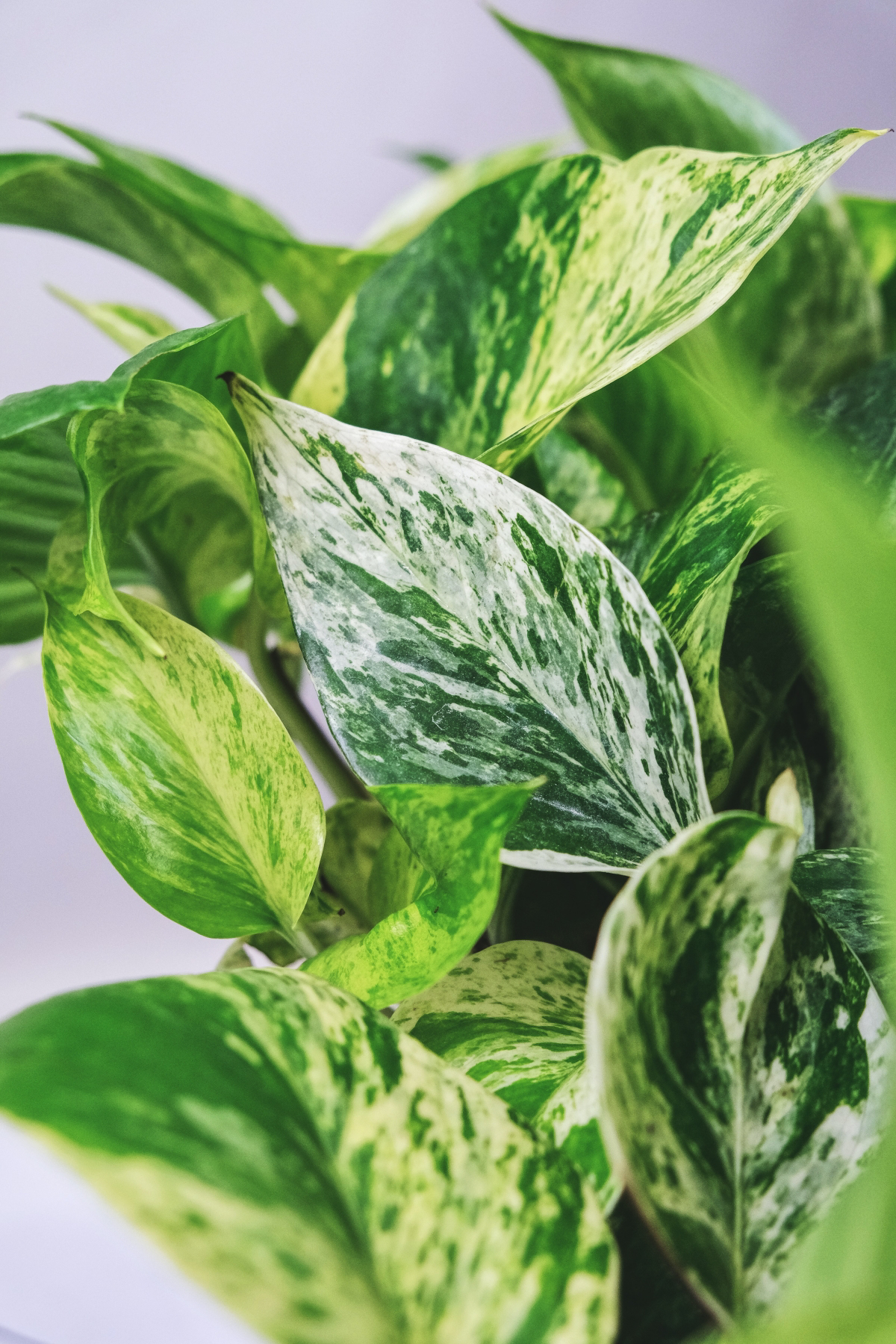
Let the stunning variegation of your Marble Queen be the star. Its cascading vines are made for drama. Hang it in a macrame planter to draw the eye upward, or let it trail elegantly from the top of a bookshelf or cabinet. The creamy white and green patterns create a breathtaking contrast against dark-painted walls or alongside minimalist decor, adding a touch of living art to your space.
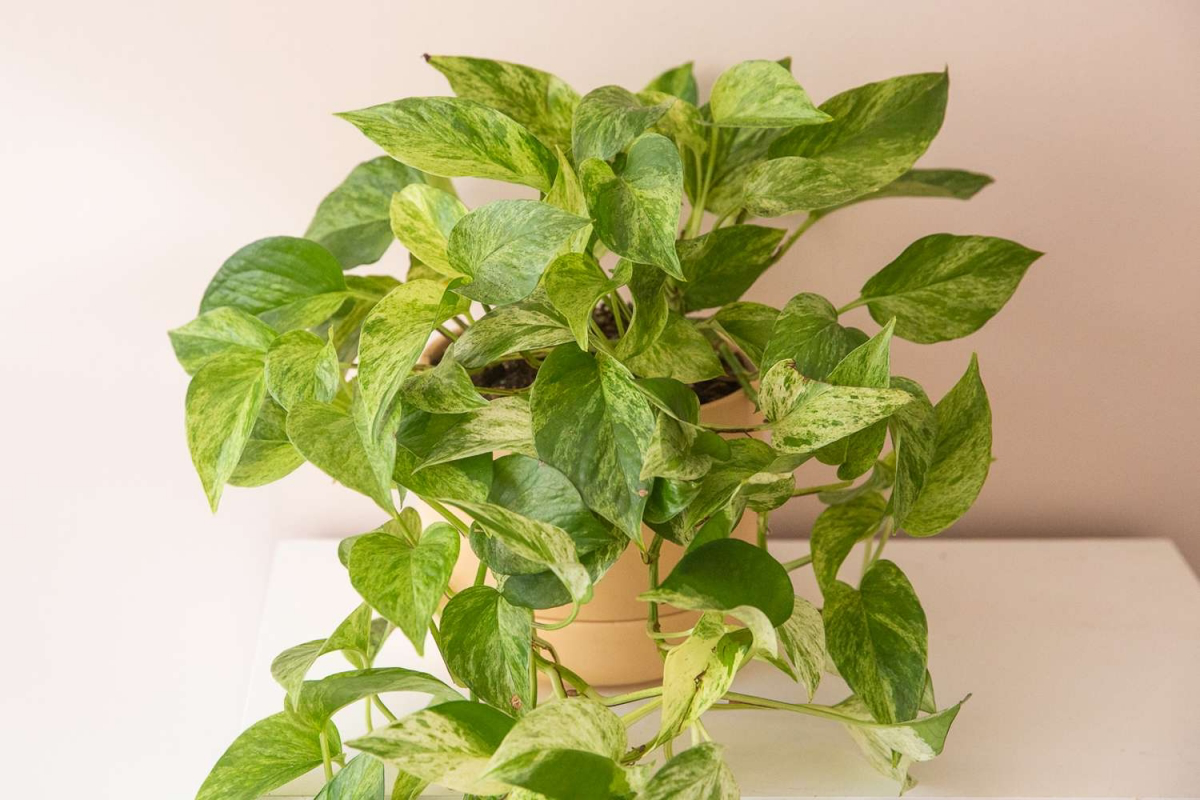
- Prevents ugly brown, crispy edges on the delicate white parts of the leaves.
- Encourages healthier, more supple new growth.
The secret? Humidity! While tough, your Marble Queen is a tropical native at heart. Misting it a few times a week or placing it on a pebble tray with water will make a world of difference.
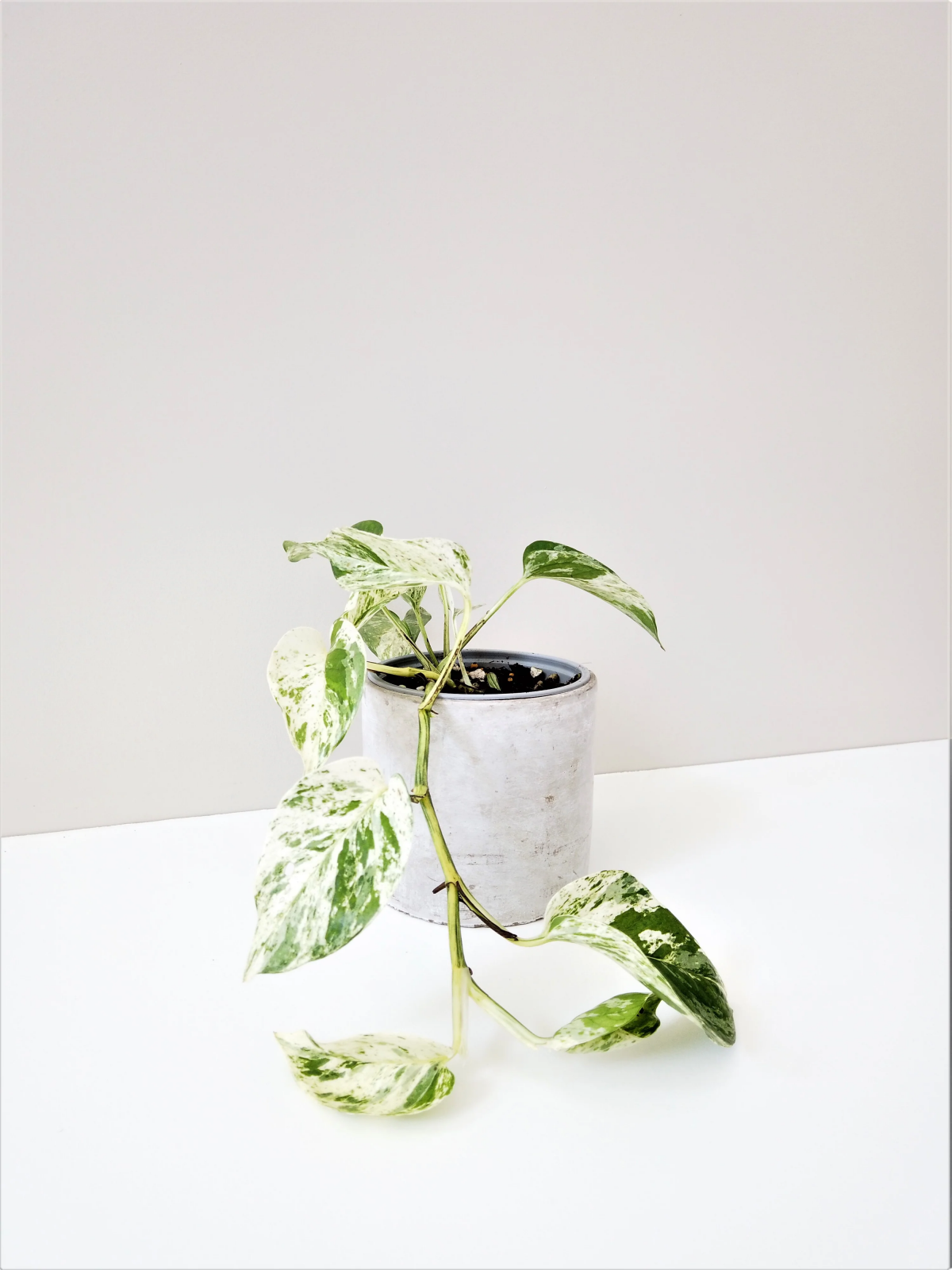
Watering Woes: The number one mistake is showing too much love with the watering can. To get it right, follow the ‘drench and dry’ method.
- Water thoroughly until it drains from the bottom holes.
- Dump out any excess water from the saucer.
- Don’t water again until the top 2 inches of soil are completely dry to the touch.
All parts of the Epipremnum aureum plant contain insoluble calcium oxalate crystals, which are toxic if ingested by pets.










